Dogs look up to us. Cats look down on us. But pigs treat us as equals.
Winston Churchill said that.
People challenge the intelligence of a pig. But in my opinion, any animal that can take soybeans and corn and turn it into bacon is a genius.
Don Day said that.

I was amazed when I saw the numbers. I was sure I had read somewhere that lamb was number one. Or perhaps it was the meat from sheep and goats combined. But there it was. 40% of all the meat consumed in the world is pork.
But then I thought about where the stat came from. That 40% number was published by the Pork Marketing Board. Was there an asterisk and footnote missing? So I checked further. Most independent sources said that 38% of the world’s meat production was pork. Close enough. And definitely giving the pig the title of the world’s most popular animal to find on the plates of this planet.
Now why was I looking at these numbers? Other than being a crazily over-the-top food fanatic. Well it’s mainly because, lately, I have been eating and enjoying a lot more pork than I used to. I’ve even added it to my far-to-many t-shirt collection.

There are a few reasons why. The first is taste. Of course. The second is availability, especially when I’m in Mexico. The third is one that seems to be influencing me more and more. Price.
When it comes to my old-time meat eating habits, I’ve never been that big on poultry. The other three meats have always been higher on my desirability ladder. And pork? A few rungs above poultry. But always a distant third to beef and lamb.
So why the change? Well I’d been noticing the price of beef going up. And the price of lamb soaring. While pork prices seem to be just about where they always were. And if beef is twice the price and lamb three times the price, shouldn’t beef be twice as enjoyable and lamb three times as enjoyable as pork. They’re obviously not. Not in my opinion anyway.
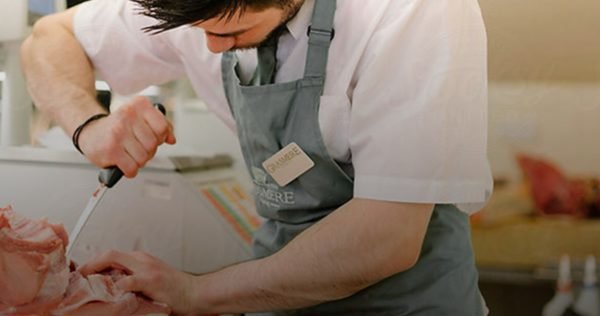
Back to that second reason why I’ve been changing my meat eating habits, pork’s easy availability, particularly when compared to beef. Pork has dominated the display cases of virtually every Mexican carniceria that I’ve ever frequented. So I received a big surprise when I checked out the popularity of pork in Mexico. In my second home, poultry is the number one choice by far, representing 51% of the country’s meat consumption. Pork is second at 26% and beef a closer than I would have guessed third at 22%. The second big surprise though was lamb and goat combined totals just 1% of Mexican consumption. That doesn’t make sense if you look at the number of barbacoa stands, or the flocks of sheep you see on any country drive, but does make sense when you think about how it’s almost impossible to find lamb or goat at any butcher.
So why is chicken so much more popular than pork in Mexico? I thought it might be price, particularly when you consider that Mexico is regarded as a relatively poor nation. So I did a comparison. It wasn’t easy because, as you know, different parts of an animal are priced differently and there isn’t one single place in San Miguel de Allende that stocks fresh versions of all four meats. I decided the best way to make the playing field equal was to use ground versions and, when more than one style was offered, such as a different lean/fat ratio, I always chose the cheapest. Here is how they compared (all prices, per kilo, in Mexican pesos).
Lamb: $230. Beef: $90. Pork: $83. Chicken: $66.
I was little surprised that ground chicken was cheaper than ground pork but a lot surprised that ground pork was only a little bit cheaper than ground beef. It was only when I got into whole prime cuts…the strip loins, the ribeyes, the filets…that the price of pork was significantly different from beef. So let me tell you about one dish that Don Day’s Wife has been making lately. Because I like it a lot and I think you might too. And it’s less than half the price of its beef equivalent.
Introducing the pork tenderloin steak.

Yes, steak. The Pork Marketing Board is suggesting retailers name their chops as though they are beef steaks. And we’ve gone one step further by using pork tenderloin instead of beef.
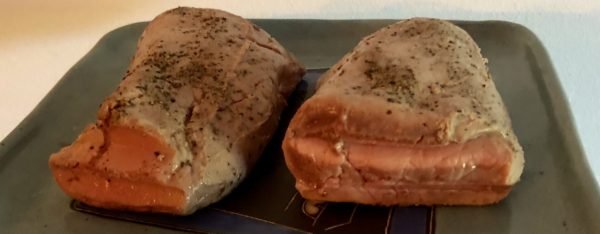
We’re cooking and serving it almost exactly the same way that we would if it was a filet mignon. About the only difference is, before it goes on the barbecue, the pork loin gets covered with a tea towel then gets a few blows with the hammer (Don Day’s Wife won’t trust me with a wooden meat mallet) to level out the thickness for even cooking. Then, a sprinkle of seasoning on each side (you can buy Montreal steak spice at Bonanza) and it’s on to the very hot barbecue (550F is the most I can get with propane at San Miguel’s altitude).

I like my pork tenderloin steak medium. Don Day’s Wife likes hers medium rare. So I’ve included the meat thermometer readings for the four levels of doneness. And like beef tenderloin, the lack of fat in pork tenderloin means that it’s best served with a sauce. Most recently that was a peppercorn with a side of oven baked mini potatoes, Jerusalem artichokes, shallots and cauliflower.

And was it as good as a filet mignon? Not quite, in my opinion. But it was a welcome change. Especially considering the price.
Also introducing the pork burger.
I get just as much pleasure from a good hamburger as I do a good steak. But it’s tough to make a good burger in Mexico. Mexican cows are just way too skinny. And with less fat in the grind, there’s less flavor in the pattie. Don Day’s Wife’s solution has always been to ask our butcher to add pork to our grind. She uses an 80/20 mix with the 20% being belly or smoked bacon.
But what if the burger patty was 100% pork? Not so strange if you think of the word hamburg. First syllable: ham. And hams come from those guys with the curly tail, don’t they?
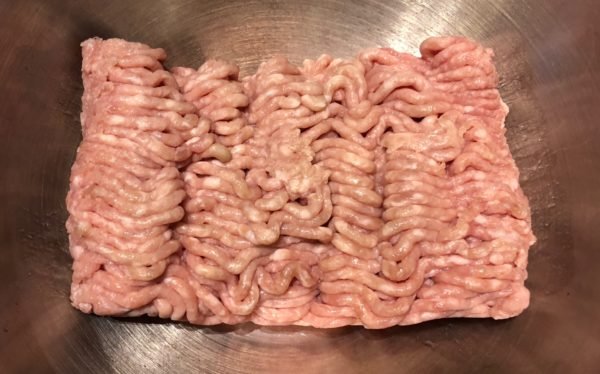
Then what if you asked the butcher for only shoulder or leg in the grind? That’s what we’ve tried and we like it. A lot. We’ve found that pork burgers do need some extra spicing and Don Day’s Wife mixes it up differently almost every time. Sometimes there’s cumin. Sometimes there’s chipotle. Often times there’s this mix (to go with 600 grams of pork).

1 egg
1 medium onion
2 cloves of garlic
3 tbsp. hoisin sauce
1 tbsp. sriracha sauce
1 tbsp. smoked paprika (hot or mild)
2 tbsp. chopped thyme (if stems are tough, strip leaves from stems)
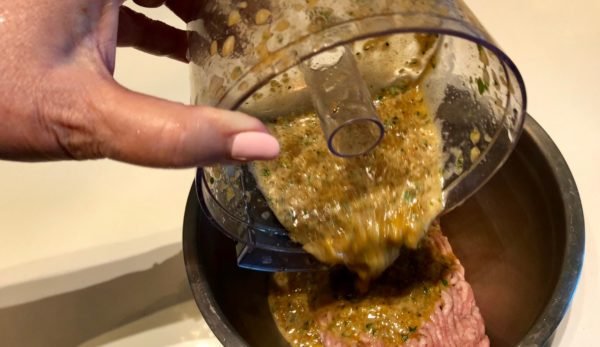
Pulse all ingredients except pork in a mini chopper (or chop onion and garlic finely and mix in a bowl), then combine with pork. Shape into four patties and grill.
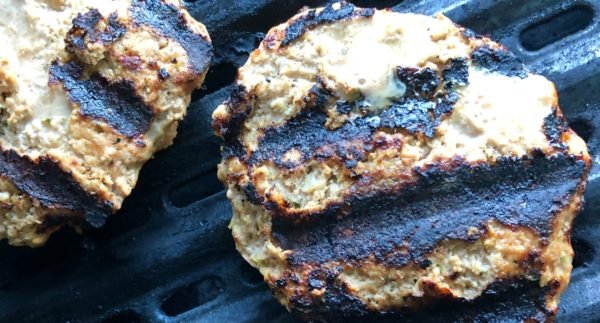
I like heavy sear marks and I almost always top the pattie on the grill with a thick slice of cheese (Costco always has good cheddar).
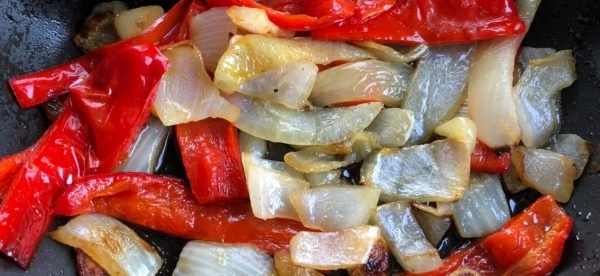
I also think sautéed onions and red bell peppers are a great addition to the pork burger (though Don Day’s Wife prefers raw onions). Otherwise, I’d say dress your pork burger the same way you traditionally dress a beef burger. Tomato, lettuce, pickle, mustard, ketchup, whatever.
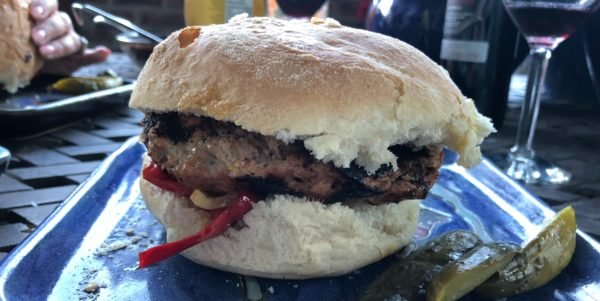
I’ve found pork burgers are just as juicy as beef. And the taste? Better than 100% Mexico beef. Not quite as good as an 80/20 beef/pork mix. But close. And definitely different enough to add to my regime once or twice a month.

Pork may be the number two meat in Mexico but pork’s popularity is growing. The latest numbers show pork consumption is up 3.3% over the last two years. I’m doing my part to get that number up to 4.4. Care to join me?


What is pork shoulder or butt called here in Mexico in Spanish?
I call it espaldilla but it’s best done by pointing (sometimes at my own body rather than the pig’s) instead of asking (and not easy as pork butt is not a traditional cut in Mexico). The lower part of the shoulder, what I call the picnic, in English, Mexican butchers call the pecho. If you’re in San Miguel de Allende, my butcher, La Nueva Aurora in La Luz is very good at interpreting expat requests.
As was pointed out, a butt is not your everyday Mexican cut. I have bought pork shoulder/butt/Boston butt from La Nueva Aurora in La Luz. After we took a look at his ‘illustrated 3 ring binder’ he had to actually cut the butt from a half pig. That was a while back. Don’t know if he keeps butts ready to go now or not.
PS. As Emeril used to say “pork fat rules!’
Still no butts at La Nueva Aurora. But I do like that he tries to cut it out of the pig. My problem is he always asks me for exact instructions as to where the butt is and I just mumble and stumble.
A chef in San Miguel told me we have to cook pork to well done because of Tricinosis. Is that not true anymore?
I used to worry about it but then Joanne Kates, one of Canada’s best-ever food writers, told me the last time it killed someone in Canada was in the last century so I decided I’ll take my chances. Though one risk certainly doesn’t justify another, I’d guess that the chance of catching E.coli from rare beef is probably more dangerous.